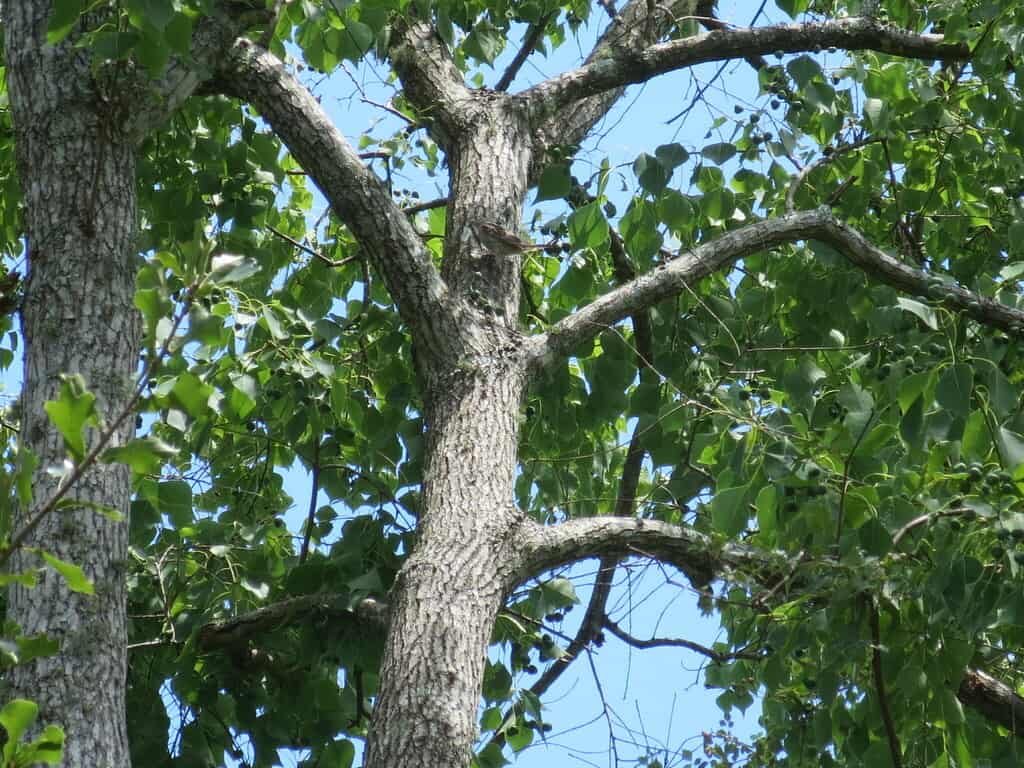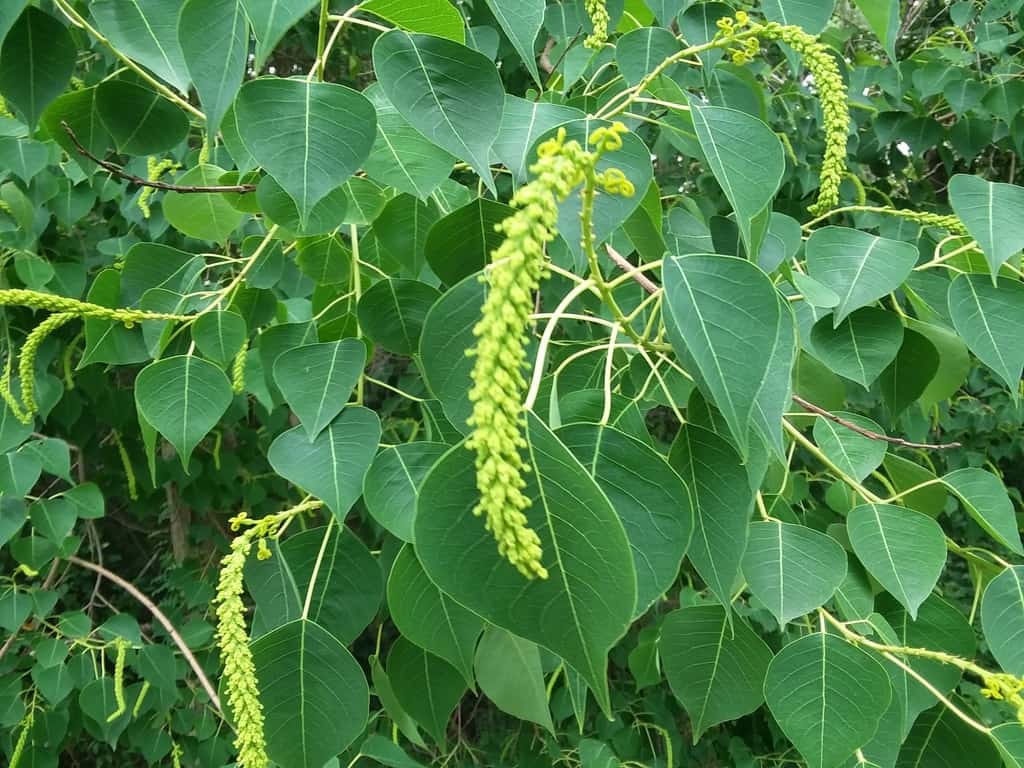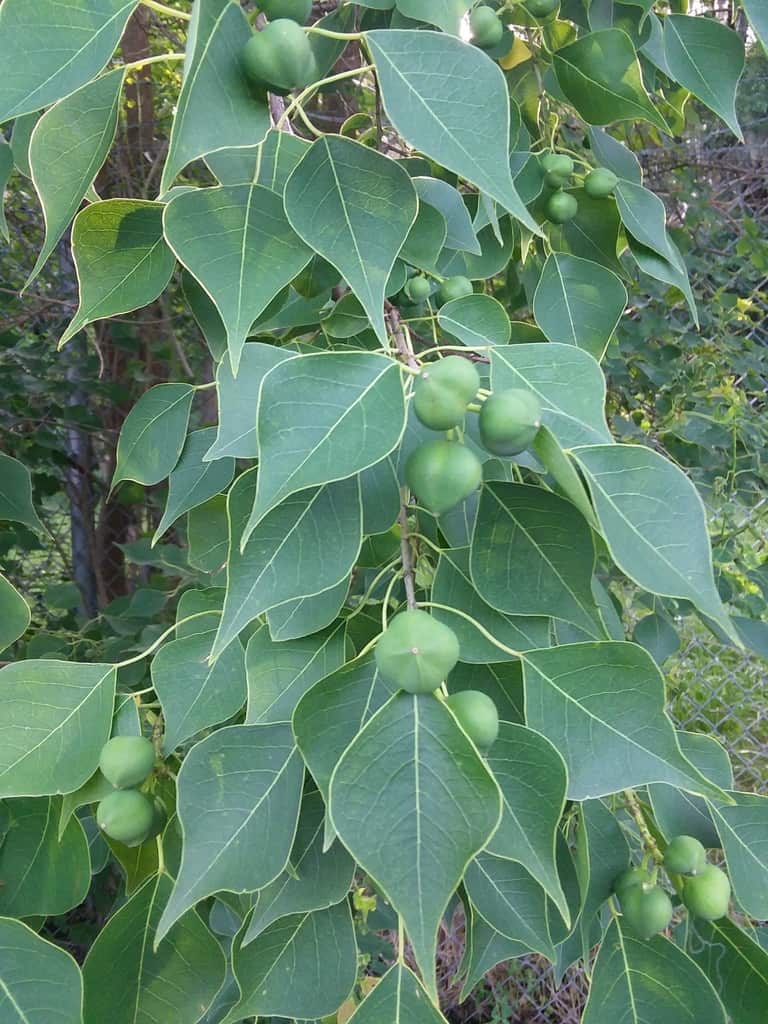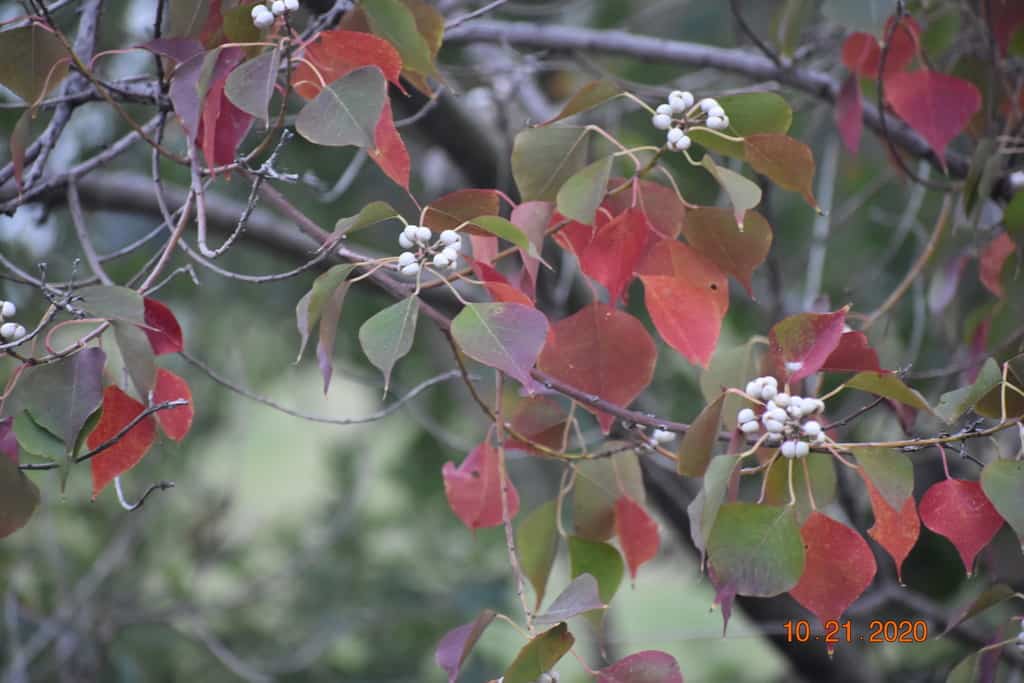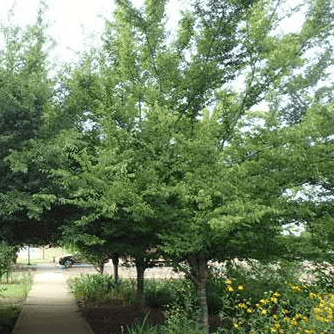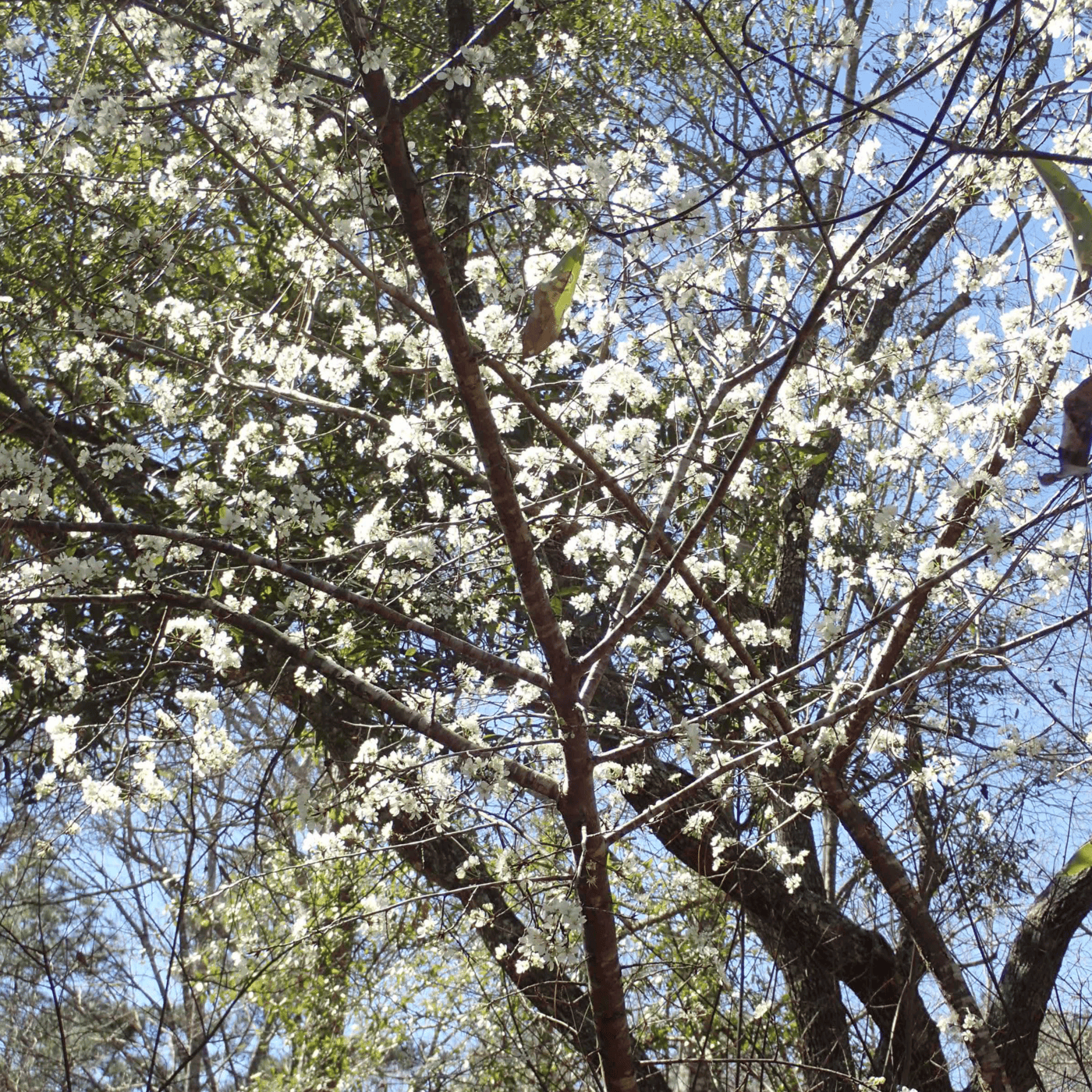This medium size (30’ tall) tree is native to East Asia (Central China and Japan) and was first introduced into the U.S. (South Carolina and Georgia) in the 1770s by Benjamin Franklin. The trees that escaped cultivation and spread rapidly across the Southeast, however, are thought to have come from later introductions (1900s) when the federal government promoted Chinese Tallow for seed oil and soap production. It was also planted as an ornamental by those attracted to its yellow spring flowers, red fall foliage, and white seed pods. It produces a prodigious amount of seeds (large tree=10,000) and root suckers; it also can regrow from cut stumps. Birds fill the primary role in seed dispersal and increasing the frequency and rate of seed germination by ingesting and passing Chinese Tallow seeds through their guts.
The Chinese Tallow is classified by the Louisiana Department of Wildlife and Fisheries as a Tier I invasive species defined as “currently causing severe or widespread negative impacts on wildlife or natural communities in Louisiana”. This species has become one of the worst invasive plants of the moist-to-wet forests and grasslands of Louisiana. It readily invades disturbed sites, but can also spread into undisturbed forests. Utility right-of-ways and roadways provide avenues for its spread into the interiors of adjacent forests. It is aggressively invasive in old fields and pastures within the historic range of the Louisiana Cajun Prairie; abandoned fields and shallow wetlands there quickly become Chinese Tallow thickets.
The lipid-rich outer seed coat of Chinese Tallow may provide some nutrition to winter birds, especially those with a specialized digestive system that allows them to assimilate waxy foods (e.g., Yellow-rumped Warbler). Chinese Tallow, however, reduces or eliminates natives plant species where it proliferates, and its leaves are toxic to most lepidopteran larvae; therefore, Chinese Tallow provides no food for the young of nesting birds. Its leaves and fruit are also toxic to cattle and sickens (nausea and vomiting) humans. Chinese Tallow is not a landscaping plant and generally not sold in Louisiana, but it does occur in some residential and urban landscapes. This tree should be replaced with Louisiana natives. We suggest substitutes here, but any medium-size tree would work.
Landscape With These Native Plants Instead:

